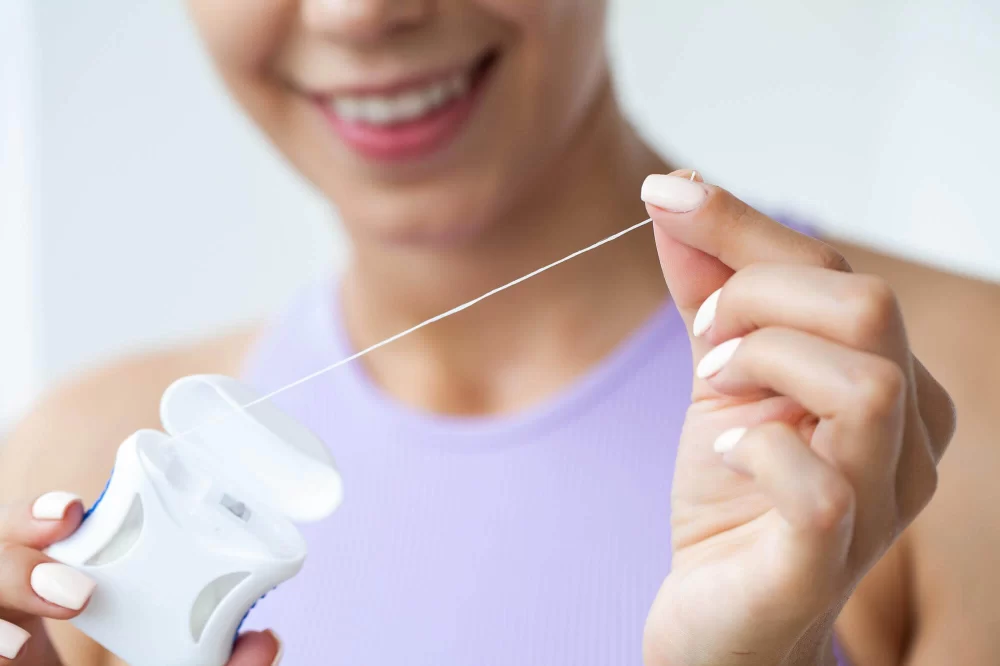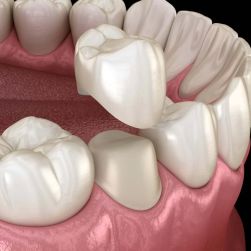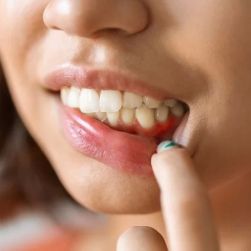How Often Should You Replace Your Dental Floss? The Ultimate Guide to Oral Health
Taking care of your teeth involves more than just brushing—flossing plays a crucial role in maintaining your oral health. But just like any other tool, your dental floss can wear out over time. So, how often should you replace it to ensure your teeth stay clean and your gums remain healthy? This is a question I had been wondering about for a while, especially after I noticed that my floss didn’t seem as effective after using it for a few days. Let me share what I’ve learned from my own experience, and how you can take better care of your teeth with some simple changes.
1. The Importance of Flossing in Your Daily Routine
We all know that brushing our teeth twice a day is essential, but flossing often gets overlooked. Flossing helps remove plaque and food particles from between your teeth and along the gum line, places that a toothbrush can't always reach. It's recommended by dentists to floss at least once a day, preferably before bed, to remove any debris accumulated during the day. But here’s where the problem lies: if you're using the same piece of floss multiple times, it could actually do more harm than good. As I’ve learned, this can lead to the spread of bacteria and irritation of the gums. That's why it's so important to know when to replace your dental floss.
2. How Often Should You Replace Your Dental Floss?
When it comes to replacing your dental floss, the answer isn’t as straightforward as you might think. There are a few factors to consider, including how often you floss, the type of floss you use, and your individual oral hygiene habits. As a general rule of thumb, I found that replacing your floss after each use is the best practice, especially if you’re using a traditional string floss. It’s more hygienic and ensures that you’re not reintroducing any bacteria into your mouth.
If you're using a floss pick, the situation is a bit different. Floss picks tend to wear out faster than string floss due to their smaller surface area and the fact that many people tend to be more aggressive with them. From my experience, I replace my floss pick after about 3 to 4 uses, but you might want to replace it sooner if you notice it’s losing its tension or becoming frayed.
3. Signs That You Need to Replace Your Dental Floss
One of the most noticeable signs that it’s time to replace your dental floss is when it starts to feel less effective. If you find that the floss no longer slides easily between your teeth or starts to shred, it’s definitely time to swap it out. Another sign is when the floss begins to stretch out. If your floss becomes too thin or breaks during use, it's a clear indication that it’s no longer in its best condition.
Personally, I realized that I had been using the same floss for days without noticing that it was losing its ability to grab onto plaque and food particles. It wasn't until I changed to a fresh piece that I truly noticed how much cleaner my teeth felt and how much easier it was to use. It was a small but significant change in my routine that made a huge difference.
4. Choosing the Right Type of Floss for Your Needs
Not all dental floss is created equal, and choosing the right one for your teeth can also affect how often you need to replace it. Waxed floss tends to glide more smoothly between teeth and is less likely to fray, meaning you might be able to use it a little longer than unwaxed floss. However, unwaxed floss can fit better between tight teeth, making it ideal for those with close contact between teeth. Depending on your needs, you might prefer one over the other, but I always recommend paying attention to how the floss feels when using it, as it will give you a better idea of when to replace it.
For those with braces or other dental work, using a thicker, sturdier floss might be necessary. These types of floss are designed to withstand more wear and tear, but even they need to be replaced regularly to maintain their effectiveness.
5. Flossing Tips for Maximum Effectiveness
To get the most out of your flossing routine, there are a few tips I’ve found to be incredibly useful:
- Use the right amount of floss: It’s best to use about 18 inches of floss, so you have enough length to work with. This ensures you’re using a fresh section of floss for each tooth.
- Be gentle: Don’t snap or force the floss between your teeth, as this can damage your gums. Instead, use a gentle back-and-forth motion to slide the floss between your teeth.
- Don’t forget your gums: While cleaning between your teeth is important, gently curving the floss around your gum line helps remove plaque and prevent gum disease.
- Floss before brushing: Flossing before you brush can help remove food particles and plaque, making your toothbrush more effective at cleaning your teeth.
Incorporating these tips into my daily routine has made a noticeable difference in the cleanliness of my mouth and my overall dental health. I also noticed a reduction in the occasional bleeding gums I used to experience when flossing, which was a huge relief!
6. The Connection Between Clean Floss and Healthy Gums
Flossing with a fresh, clean piece of floss is not just about removing food particles; it’s about preventing gum disease and maintaining overall oral health. When I started replacing my floss more regularly, I found that my gums were healthier and less prone to inflammation. This is because fresh floss removes more plaque and bacteria, reducing the risk of gingivitis and periodontal disease. It’s a simple change that can have long-lasting effects on your gum health.
Dental floss is a small but powerful tool in maintaining a healthy mouth, and by making sure it’s always fresh and in good condition, I’ve noticed significant improvements in my oral hygiene routine. Whether you’re flossing once or several times a day, ensuring that you replace your floss regularly can make all the difference. So, next time you’re reaching for your floss, take a moment to check its condition, and don’t hesitate to replace it if it’s time.







